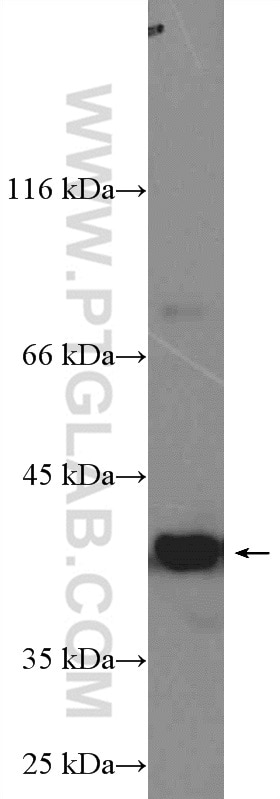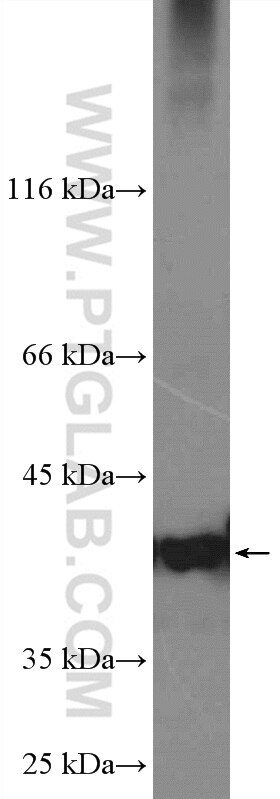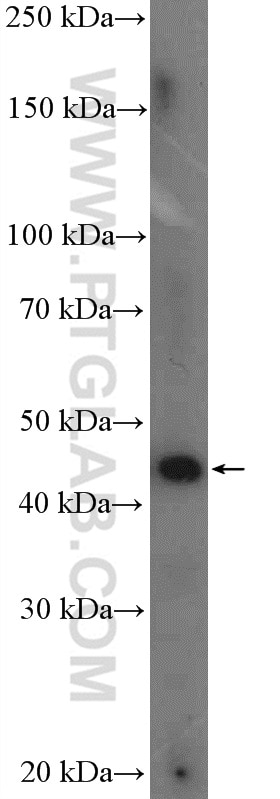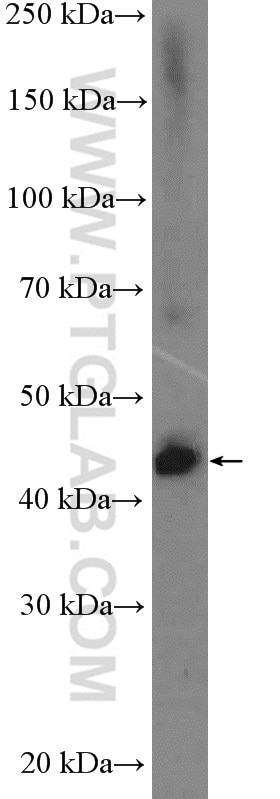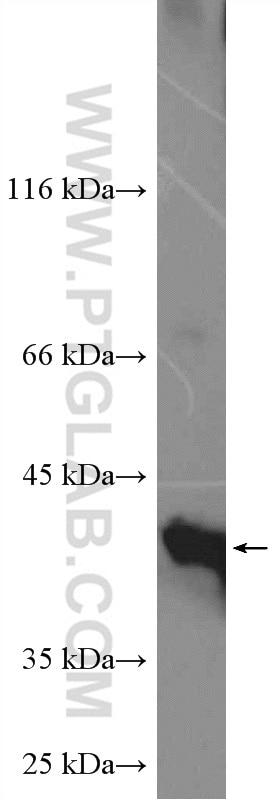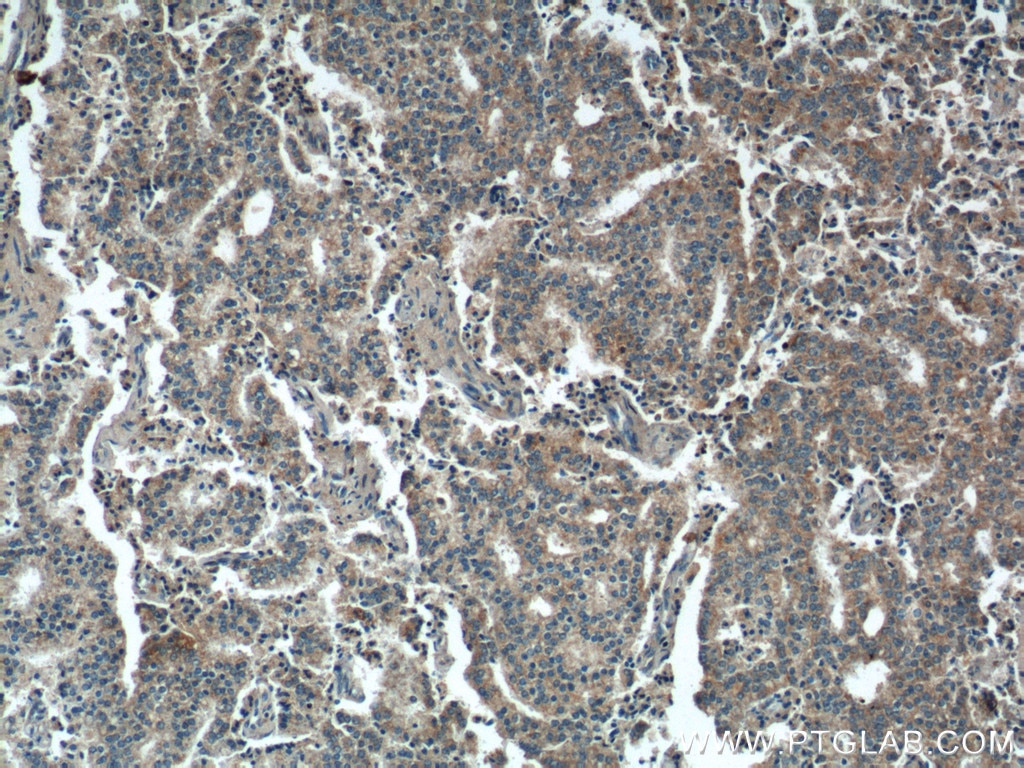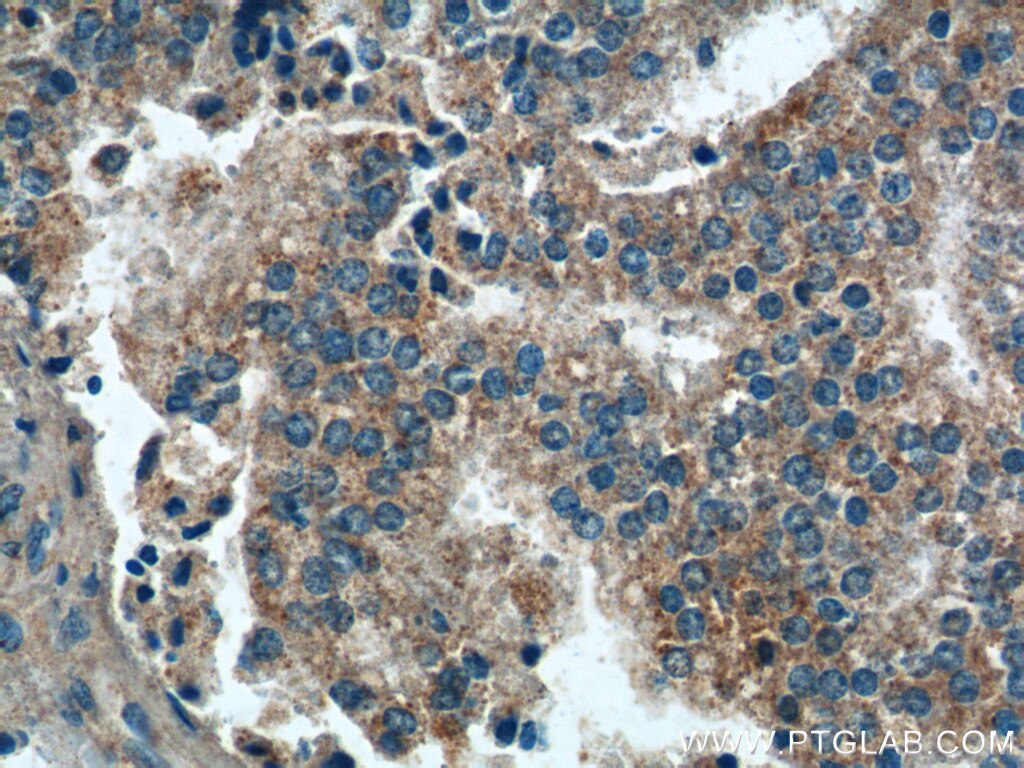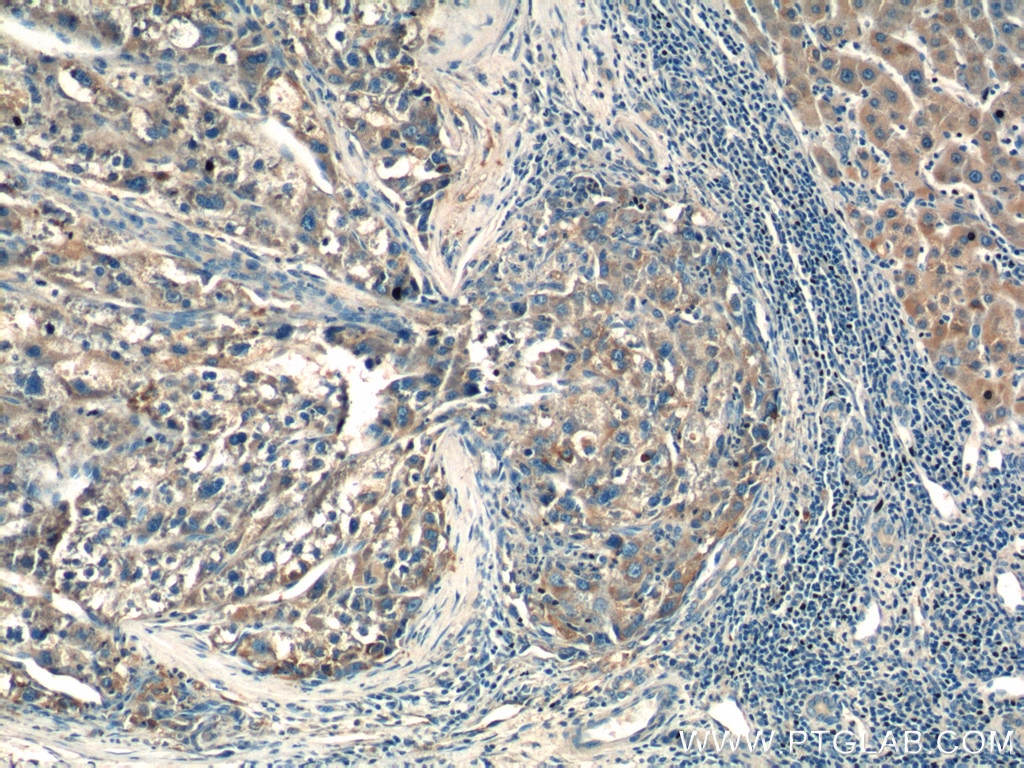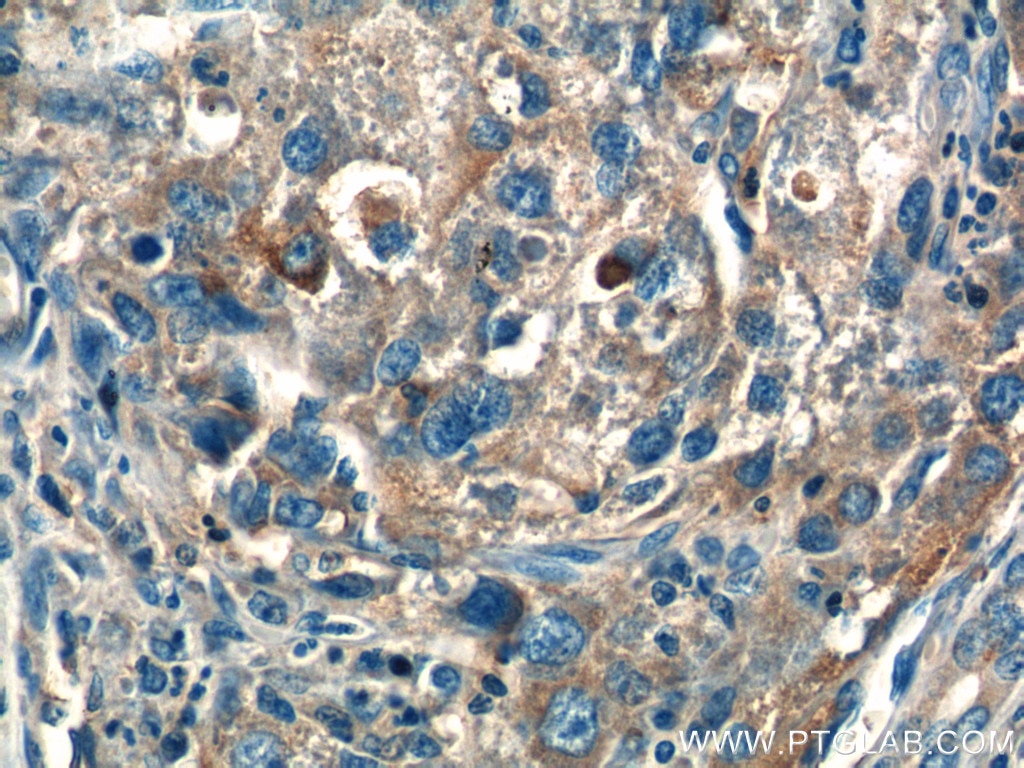Tested Applications
| Positive WB detected in | 3T3-L1 cells, HEK-293 cells, HeLa cells, Neuro-2a cells |
| Positive IHC detected in | human prostate cancer tissue, human liver cancer tissue Note: suggested antigen retrieval with TE buffer pH 9.0; (*) Alternatively, antigen retrieval may be performed with citrate buffer pH 6.0 |
Recommended dilution
| Application | Dilution |
|---|---|
| Western Blot (WB) | WB : 1:500-1:2000 |
| Immunohistochemistry (IHC) | IHC : 1:50-1:500 |
| It is recommended that this reagent should be titrated in each testing system to obtain optimal results. | |
| Sample-dependent, Check data in validation data gallery. | |
Published Applications
| WB | See 8 publications below |
| IHC | See 1 publications below |
| CoIP | See 1 publications below |
Product Information
26679-1-AP targets PARL in WB, IHC, CoIP, ELISA applications and shows reactivity with human, mouse samples.
| Tested Reactivity | human, mouse |
| Cited Reactivity | human, mouse |
| Host / Isotype | Rabbit / IgG |
| Class | Polyclonal |
| Type | Antibody |
| Immunogen |
CatNo: Ag24789 Product name: Recombinant human PARL protein Source: e coli.-derived, PET28a Tag: 6*His Domain: 56-167 aa of BC014058 Sequence: APRKVEPRRSDPGTSGEAYKRSALIPPVEETVFYPSPYPIRSLIKPLFFTVGFTGCAFGSAAIWQYESLKSRVQSYFDGIKADWLDSIRPQKEGDFRKEINKWWNNLSDGQR Predict reactive species |
| Full Name | presenilin associated, rhomboid-like |
| Calculated Molecular Weight | 42 kDa |
| Observed Molecular Weight | 36-42 kDa |
| GenBank Accession Number | BC014058 |
| Gene Symbol | PARL |
| Gene ID (NCBI) | 55486 |
| RRID | AB_2880599 |
| Conjugate | Unconjugated |
| Form | Liquid |
| Purification Method | Antigen affinity purification |
| UNIPROT ID | Q9H300 |
| Storage Buffer | PBS with 0.02% sodium azide and 50% glycerol, pH 7.3. |
| Storage Conditions | Store at -20°C. Stable for one year after shipment. Aliquoting is unnecessary for -20oC storage. 20ul sizes contain 0.1% BSA. |
Background Information
PARL (Presenilin associated rhomboid like), is a member of the rhomboid family of intramembrane serine proteases that is localized to the inner mitochondrial membrane. PARL has 2 isoforms produced by alternative splicing with the molecular mass of 42 kDa and 37 kDa. PARL regulates mitochondrial remodeling and apoptosis through regulated substrate proteolysis. Proteolytic processing of PARL may result in the release of a small peptide, P-beta, which may transit to the nucleus. The self-regulated cleavage of PARL at positions 52-53 (α-site) and 77--78 (β-site) produce two cleaved forms of PARL named MAMP and PACT with the molecular mass of 36 kDa and 33 kDa respectively (PMID: 14732705, 28178523).
Protocols
| Product Specific Protocols | |
|---|---|
| IHC protocol for PARL antibody 26679-1-AP | Download protocol |
| WB protocol for PARL antibody 26679-1-AP | Download protocol |
| Standard Protocols | |
|---|---|
| Click here to view our Standard Protocols |
Publications
| Species | Application | Title |
|---|---|---|
Mol Cell Identification of TMEM126A as OXA1L-interacting protein reveals cotranslational quality control in mitochondria | ||
Cell Rep TIM23 facilitates PINK1 activation by safeguarding against OMA1-mediated degradation in damaged mitochondria | ||
J Cell Biol OMA1 protease eliminates arrested protein import intermediates upon mitochondrial depolarization | ||
Int J Mol Sci The Mitochondrial PHB2/OMA1/DELE1 Pathway Cooperates with Endoplasmic Reticulum Stress to Facilitate the Response to Chemotherapeutics in Ovarian Cancer. | ||
Cells Disruption of Mitophagy Flux through the PARL-PINK1 Pathway by CHCHD10 Mutations or CHCHD10 Depletion | ||
J Biol Chem Diverse mitochondrial abnormalities in a new cellular model of TAFFAZZIN deficiency are remediated by cardiolipin-interacting small molecules. |

